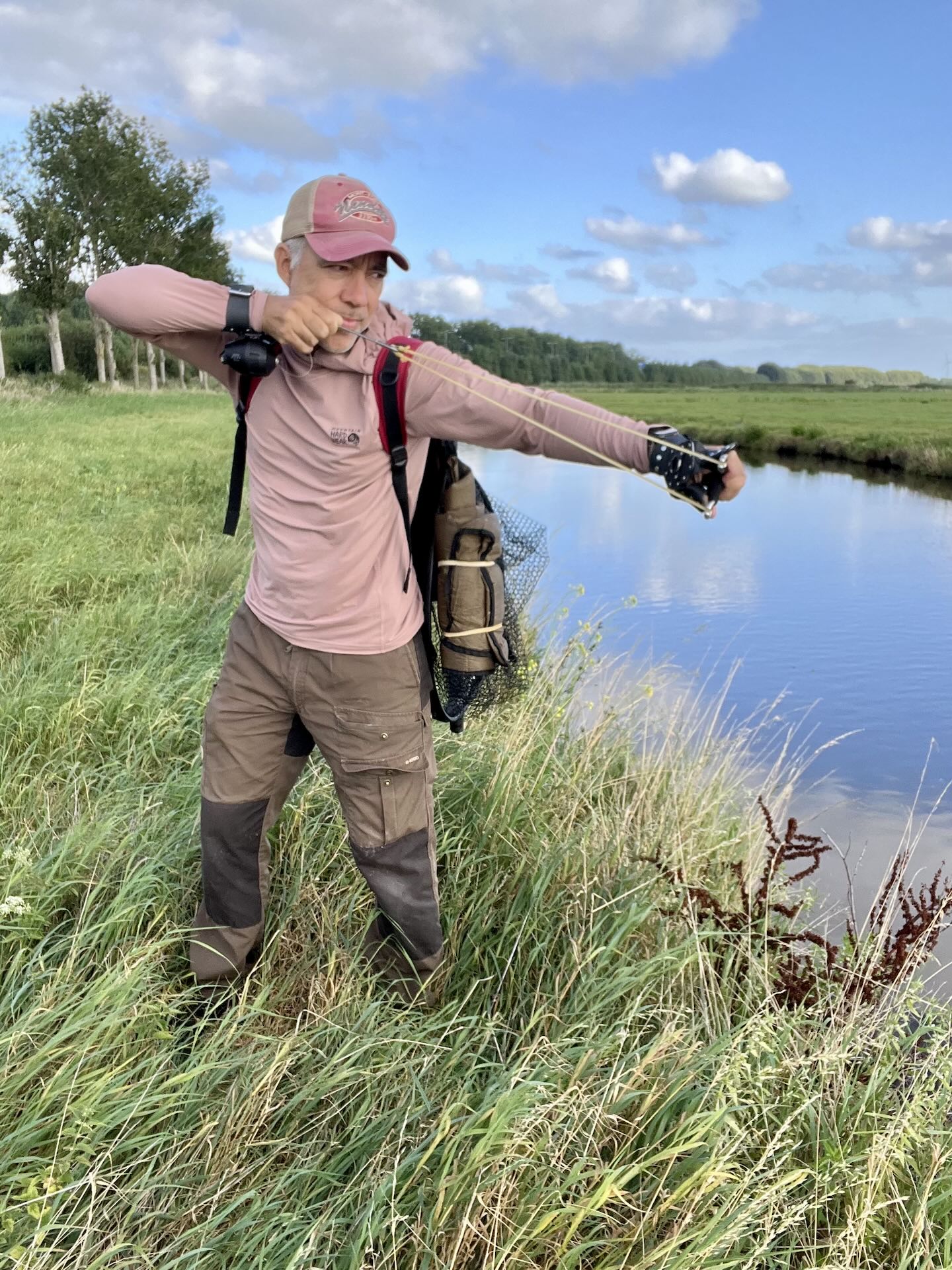
Even as a kid, I thought slingshots were cool. I made them from forked branches, post-office rubber bands, and a scrap of leather. I’d shoot pebbles and marvel at the power of such a simple tool. Years later, when my bushcraft and survival hobby took off, I discovered more powerful hunting slingshots. UK bushcrafters fitted heavier bands on their catties, shot lead or steel balls, and could take small game like rabbits, squirrels, and pigeons. I never got beyond plinking tin cans in the woods, though.
Recently I learned slingshots can also be used for fishing. I found YouTube videos by Josh Williams of The Water Swatters in Oklahoma. He uses a simple fishing slingshot with barbed darts attached by fishing line to a wrist-mounted reel, and he shoots and lands sizeable buffalo fish and carp in local waters. Here’s a short clip where he demonstrates the setup.
Williams makes it look easy, but I suspected it would be difficult and require practice. Still, I was intrigued—and when I saw the slingshot he used was only $29.99 on Amazon, I ordered one.
The kit
This is the fishing slingshot kit I received:
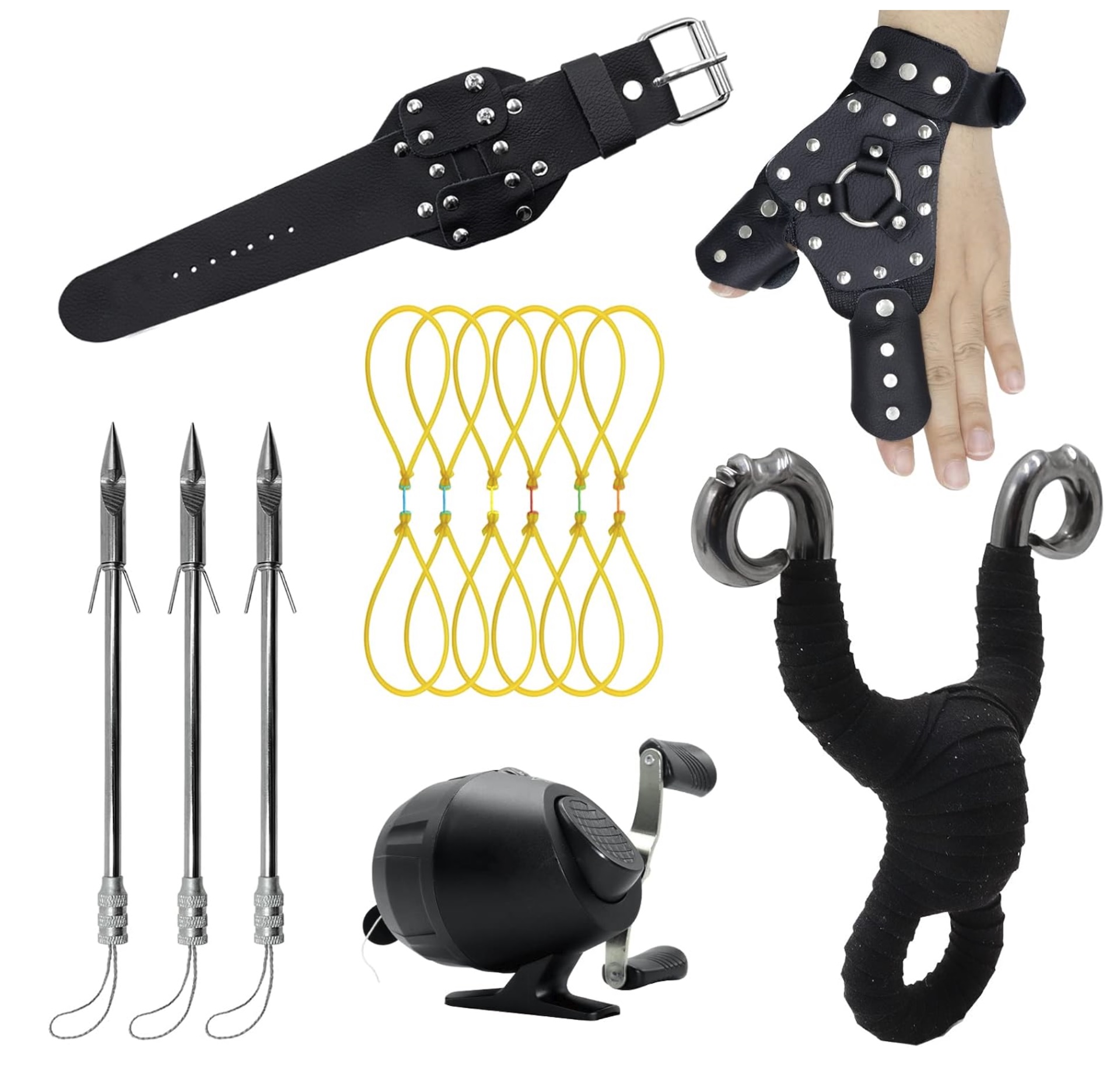
I first tested it on farmland just outside Amsterdam. It shot well. I’m not used to an armoured hand guard (Williams doesn’t use one in his videos), but with sharp steel darts it makes sense to protect your hand in case of a misfire—so I wore it. Time to find fish.
Murky water
I knew the nearby water held carp; in recent weeks (after many tries) I’d caught a few 50–60 cm fish there on rod and line. But would I be able to see them well enough to shoot? In Williams’ videos the water is clear enough to spot fish—or at least dark shapes. In the Netherlands, water is often cloudy and murky. After a few hours of scanning for signs, I was ready to give up.
Then I noticed that in shallow, calm water (like on a windless day) there are subtle surface cues that give fish away: small bow waves as they cruise, an occasional fin breaking the surface, and strings of bubbles when they forage on the bottom. The next time I saw bubbles, I took a few shots and—surprisingly—landed my first carp.
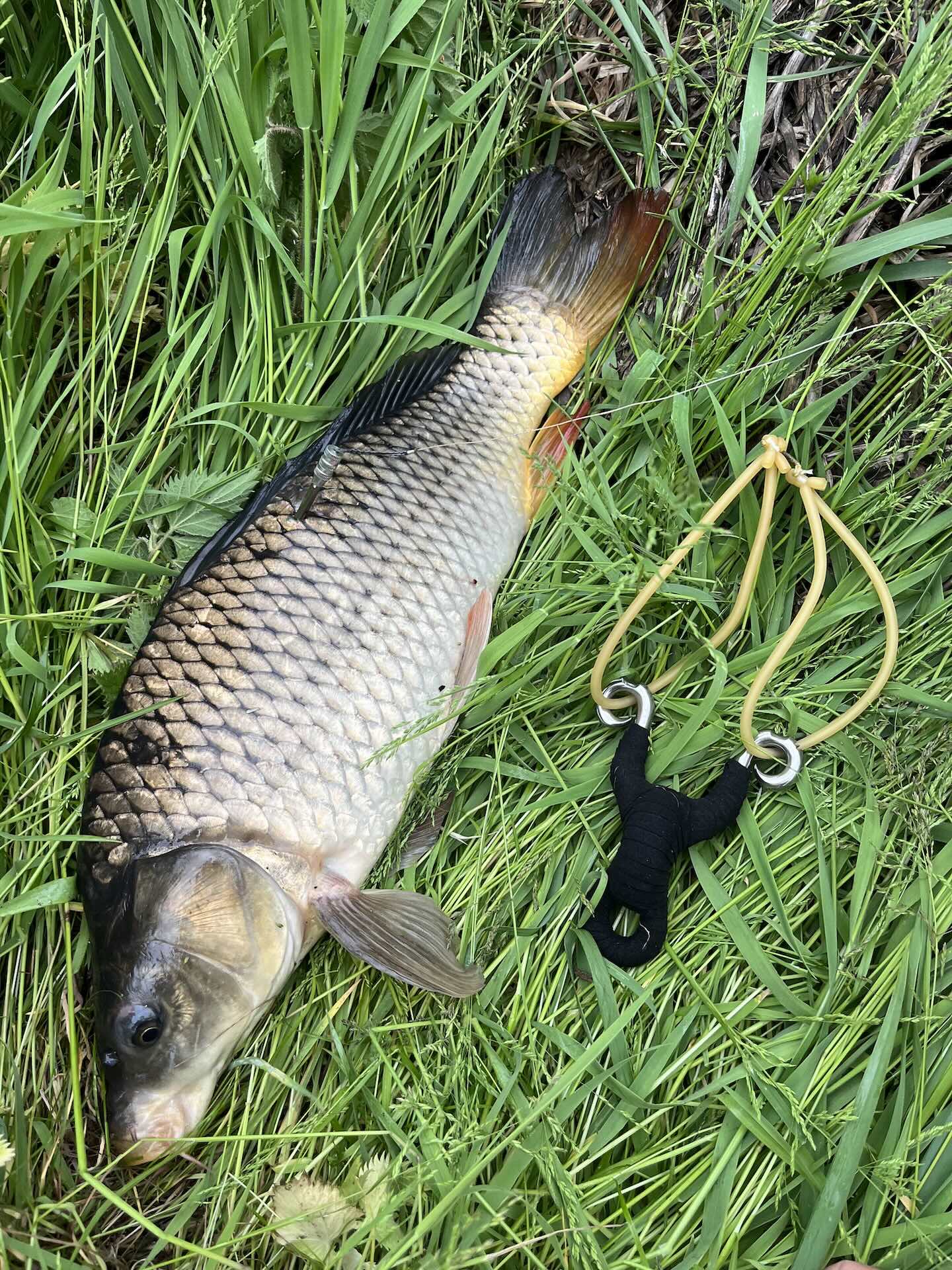
Over the next few weeks I improved and shot four more fish.
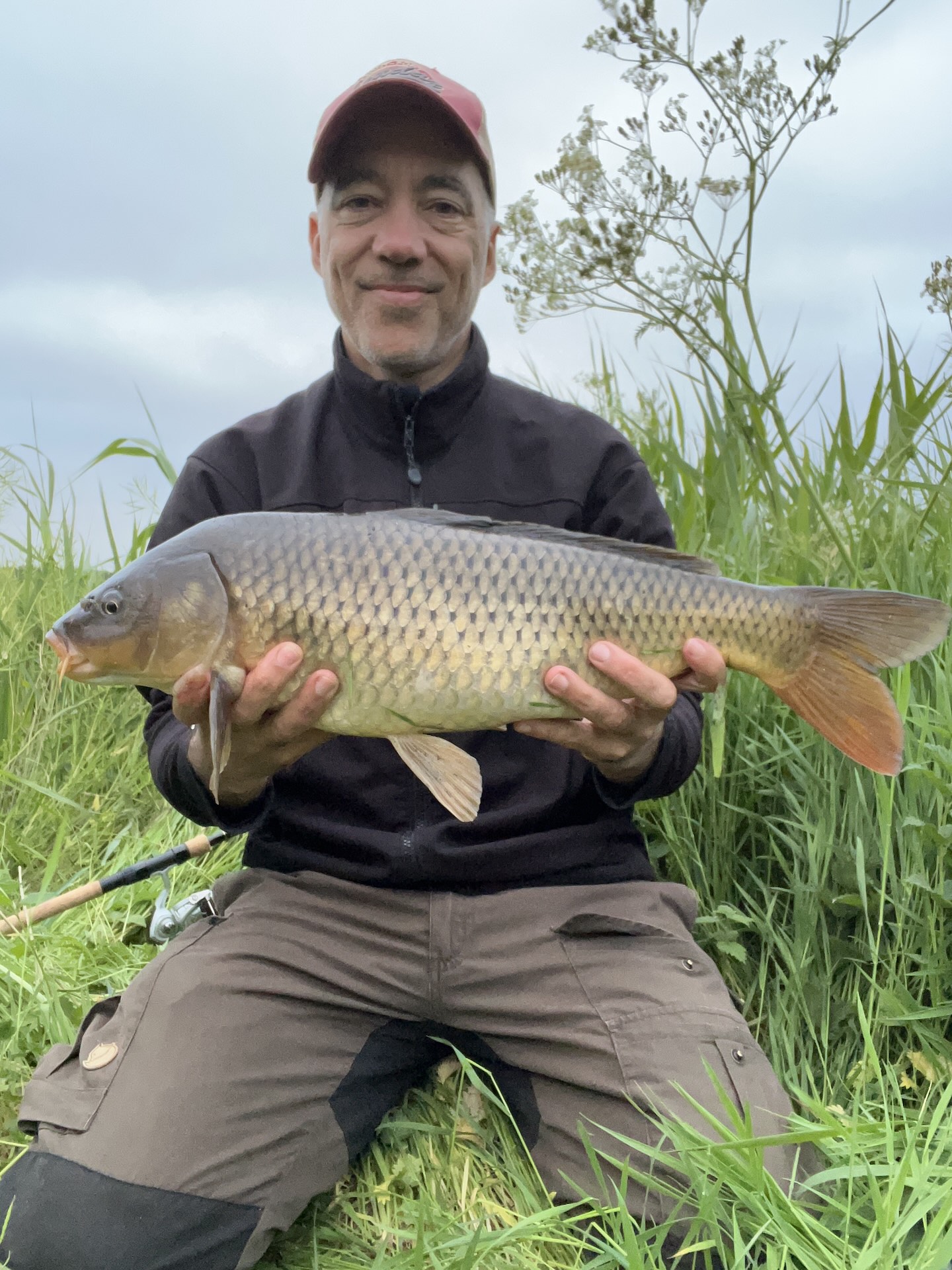
Catching carp this way turned out to be more effective than my rod fishing there! Here’s a one-minute video of me shooting a carp.
Catch & cook
In the Netherlands, most anglers practice catch-and-release and rarely take fish home, especially carp because they have many bones. (In Eastern Europe and much of Asia, carp is commonly eaten.) With a slingshot, the dart injures the fish; it’s better to dispatch it quickly and eat it. After my first two carp, I filleted and pan-fried them—and they tasted great. Some Y-bones remain in the meat, but once cooked you can pull them out by hand while eating.
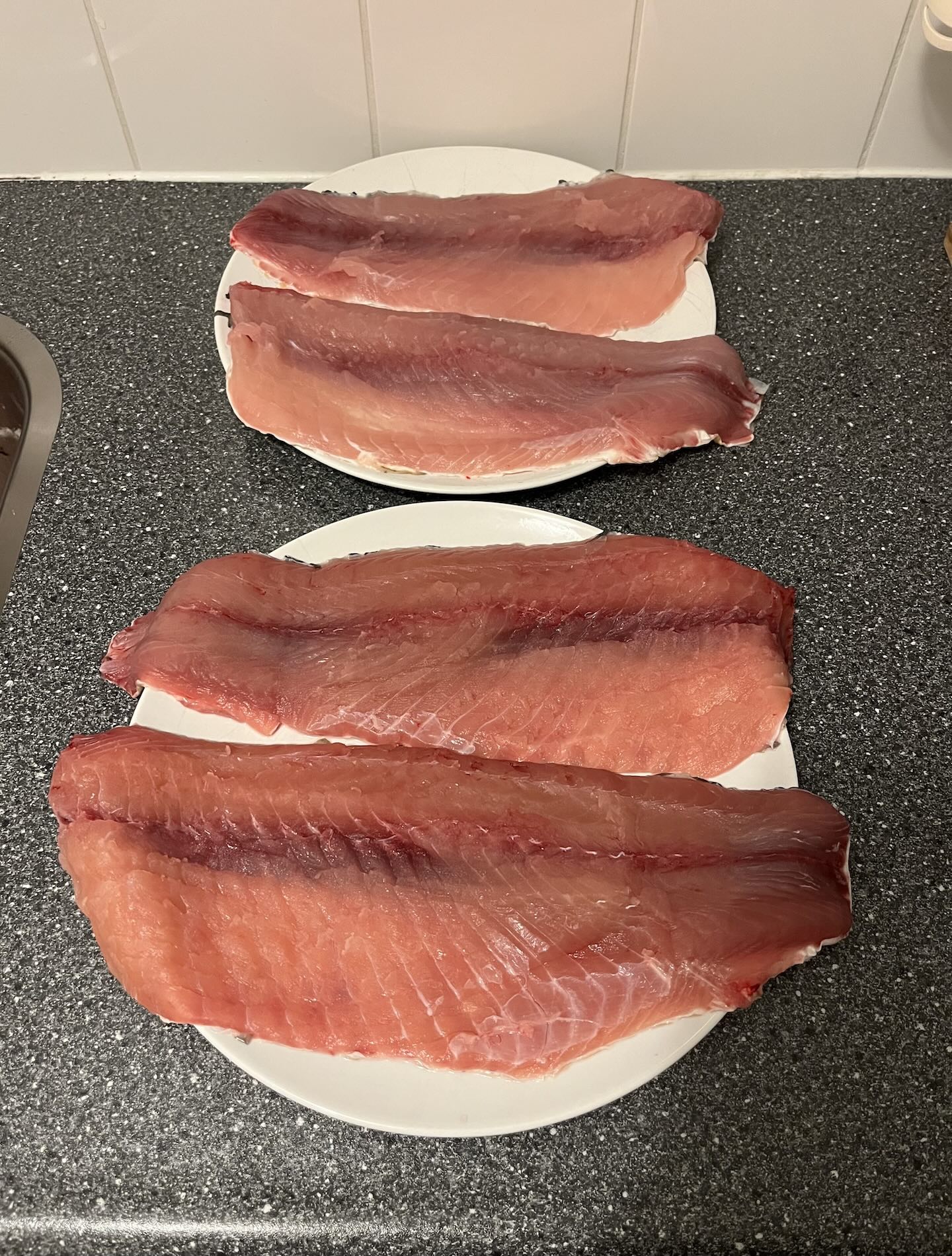
Conclusion
Slingshot fishing can be an effective way to catch carp if you’re in the right area and conditions to spot them. It also makes you feel like a primitive hunter who puts meat on the table. The kit is cheap and compact, and it required less training than I expected. Be careful with the darts—they’re no joke. Before you try this, make sure you have the proper fishing permit, that you’re allowed to keep fish, and that slingshots are legal where you live.
